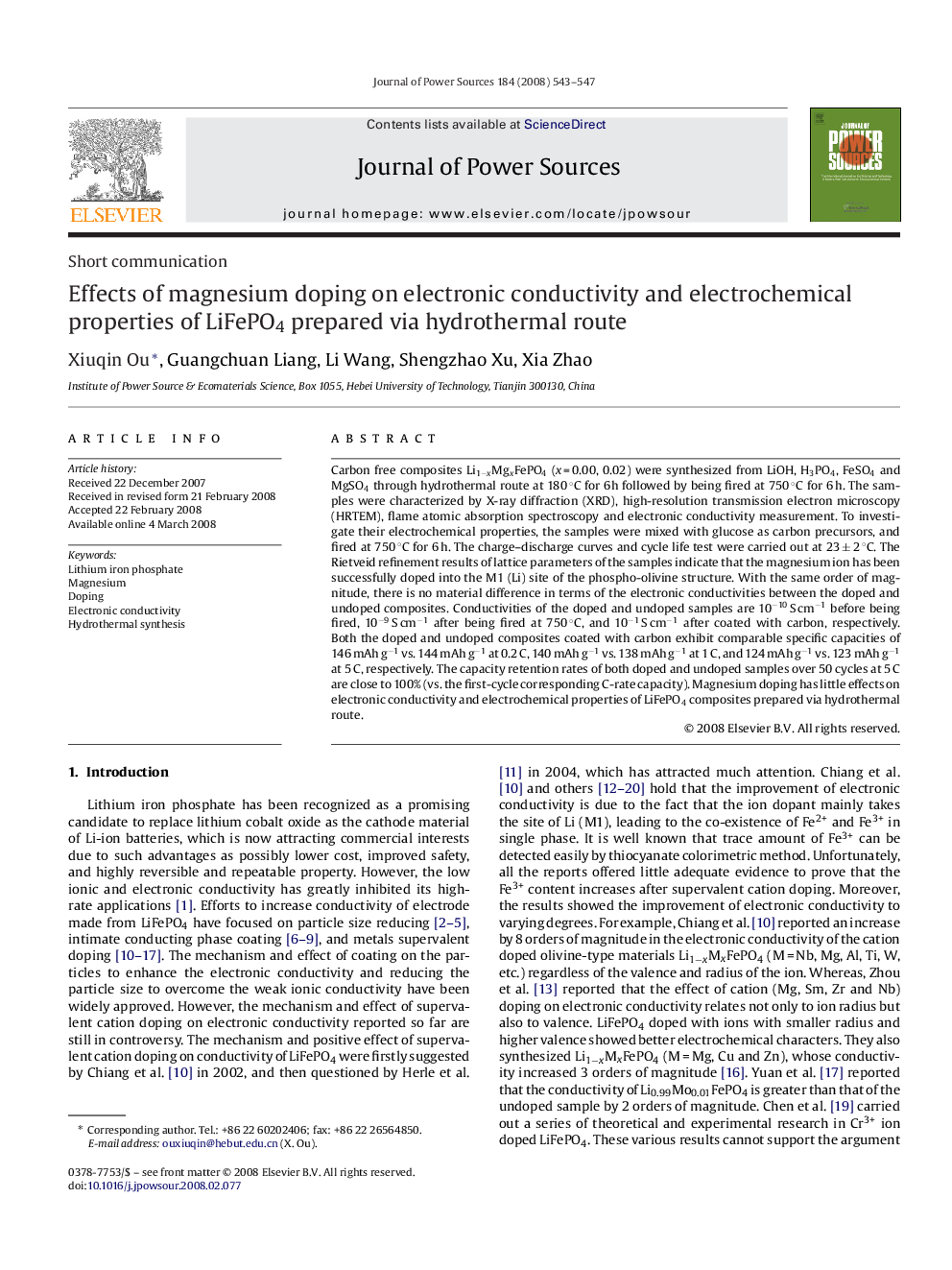| Article ID | Journal | Published Year | Pages | File Type |
|---|---|---|---|---|
| 1294518 | Journal of Power Sources | 2008 | 5 Pages |
Carbon free composites Li1−xMgxFePO4 (x = 0.00, 0.02) were synthesized from LiOH, H3PO4, FeSO4 and MgSO4 through hydrothermal route at 180 °C for 6h followed by being fired at 750 °C for 6 h. The samples were characterized by X-ray diffraction (XRD), high-resolution transmission electron microscopy (HRTEM), flame atomic absorption spectroscopy and electronic conductivity measurement. To investigate their electrochemical properties, the samples were mixed with glucose as carbon precursors, and fired at 750 °C for 6 h. The charge–discharge curves and cycle life test were carried out at 23 ± 2 °C. The Rietveid refinement results of lattice parameters of the samples indicate that the magnesium ion has been successfully doped into the M1 (Li) site of the phospho-olivine structure. With the same order of magnitude, there is no material difference in terms of the electronic conductivities between the doped and undoped composites. Conductivities of the doped and undoped samples are 10−10 S cm−1 before being fired, 10−9 S cm−1 after being fired at 750 °C, and 10−1 S cm−1 after coated with carbon, respectively. Both the doped and undoped composites coated with carbon exhibit comparable specific capacities of 146 mAh g−1 vs. 144 mAh g−1 at 0.2 C, 140 mAh g−1 vs. 138 mAh g−1 at 1 C, and 124 mAh g−1 vs. 123 mAh g−1 at 5 C, respectively. The capacity retention rates of both doped and undoped samples over 50 cycles at 5 C are close to 100% (vs. the first-cycle corresponding C-rate capacity). Magnesium doping has little effects on electronic conductivity and electrochemical properties of LiFePO4 composites prepared via hydrothermal route.
